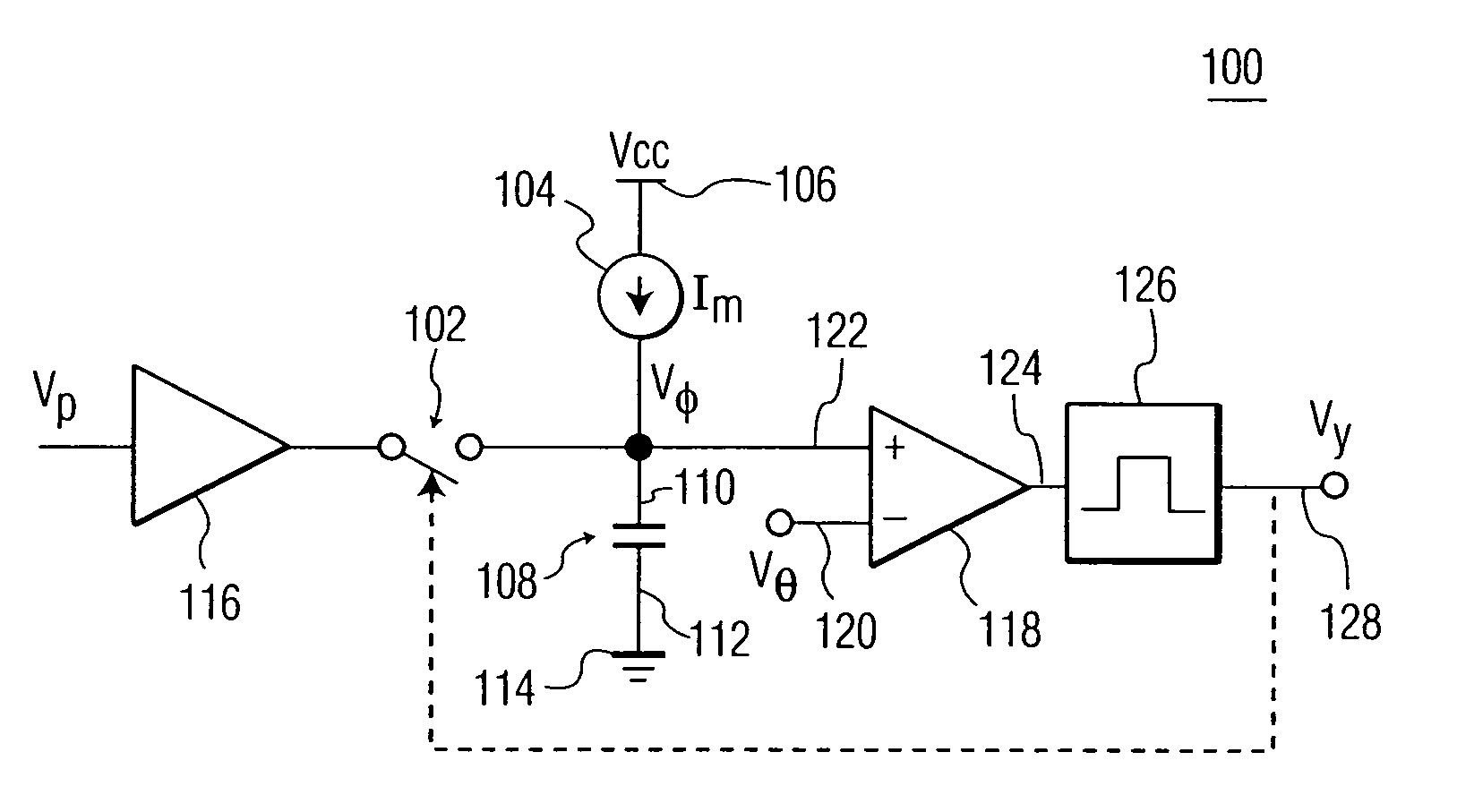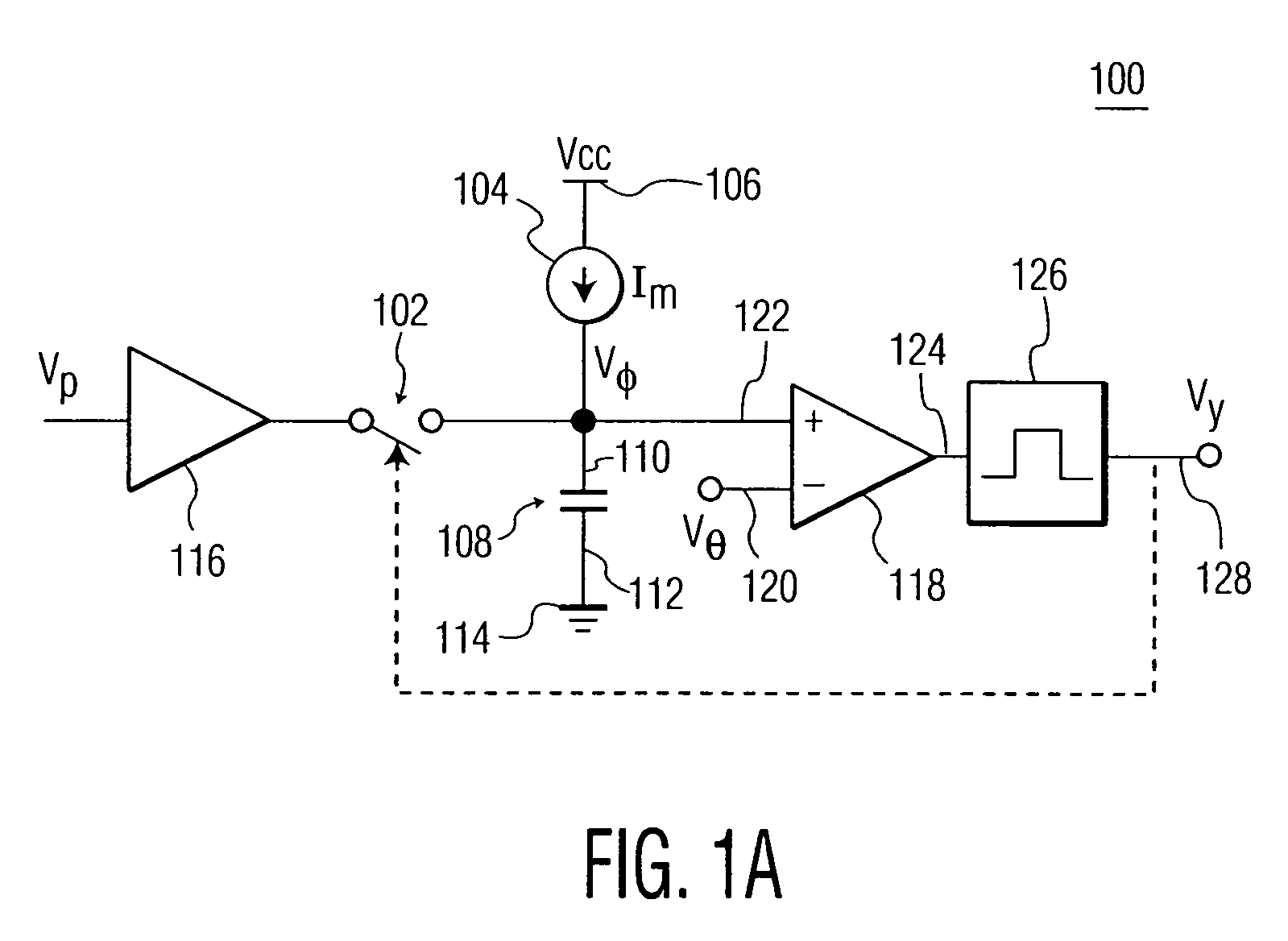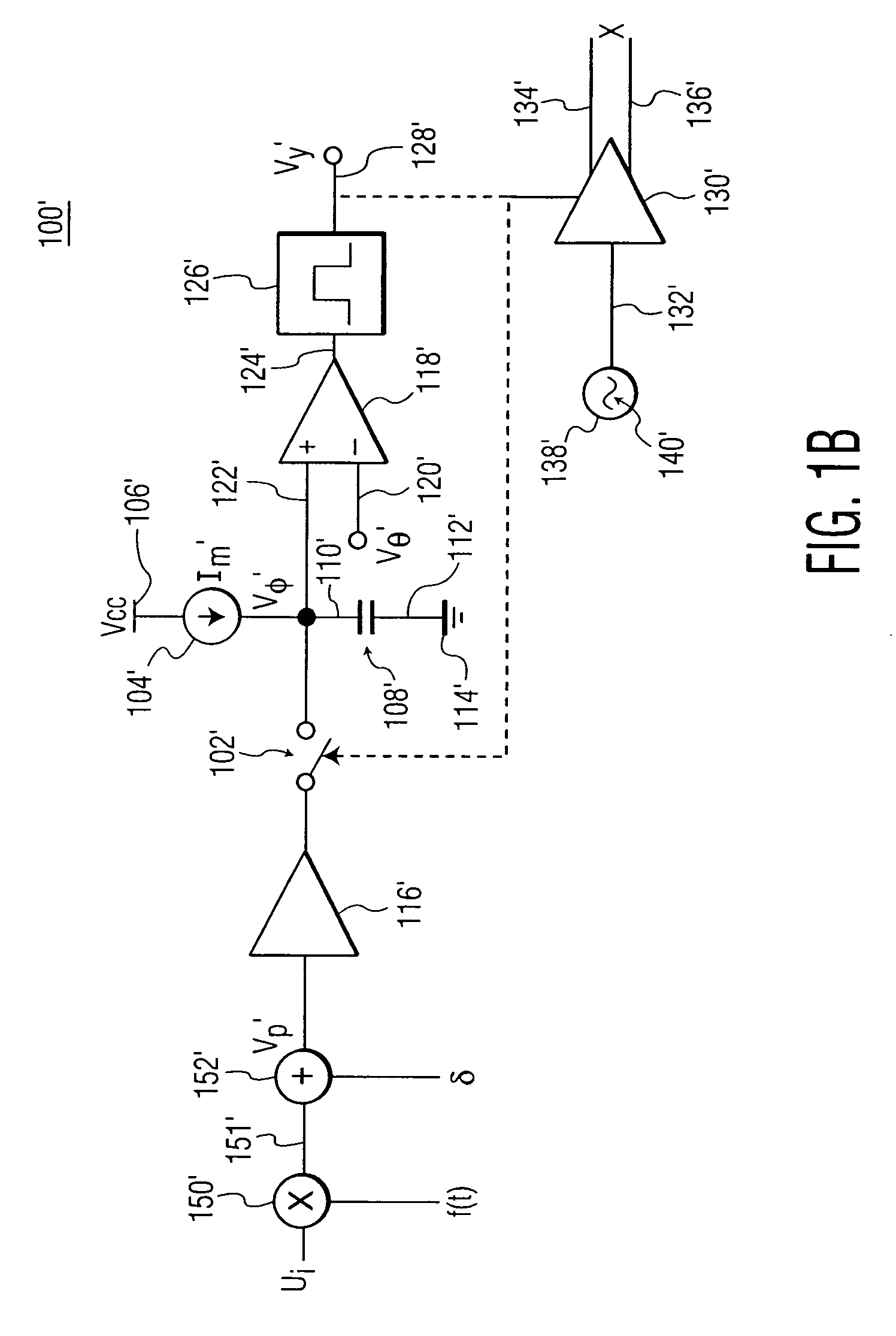Cort_x: a dynamic brain model
a brain model and dynamic technology, applied in the field of brain activity modeling, can solve the problems of incomplete understanding, progress to further this incomplete understanding, and important questions about the functions of the brain that remain unanswered
- Summary
- Abstract
- Description
- Claims
- Application Information
AI Technical Summary
Benefits of technology
Problems solved by technology
Method used
Image
Examples
Embodiment Construction
[0036] The present invention relates to a circuit and various subcircuits which model a cortical region of the brain. More specifically, the present invention relates to a network of emulated bifurcating neurons (“BN”), which network models a cortical region of the brain. The network adapts temporally according to a sensory input vector, a state vector, and internal coupling factors. An embodiment of the present invention is a plurality of integrated-circuit relaxation oscillator neurons (“IRONs”) networked together to form a cortical region emulation circuit. The IRON, when driven by certain periodic waveforms, exhibits many of the characteristics of a BN.
[0037]FIG. 1A depicts an IRON 100, an exemplary embodiment of a cortical column emulation circuit of the present invention. IRON 100 is shown in simplified form, omitting details of several of the commonly-understood underlying circuits.
[0038] First, the topology and persistent operation of IRON 100 is described. A source of ref...
PUM
 Login to View More
Login to View More Abstract
Description
Claims
Application Information
 Login to View More
Login to View More - R&D
- Intellectual Property
- Life Sciences
- Materials
- Tech Scout
- Unparalleled Data Quality
- Higher Quality Content
- 60% Fewer Hallucinations
Browse by: Latest US Patents, China's latest patents, Technical Efficacy Thesaurus, Application Domain, Technology Topic, Popular Technical Reports.
© 2025 PatSnap. All rights reserved.Legal|Privacy policy|Modern Slavery Act Transparency Statement|Sitemap|About US| Contact US: help@patsnap.com



